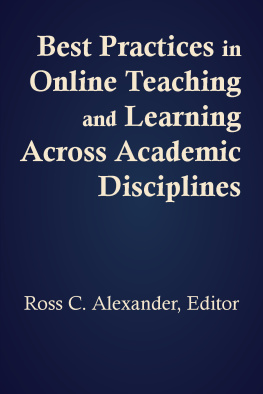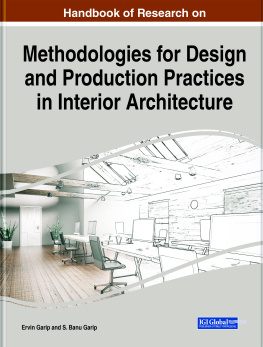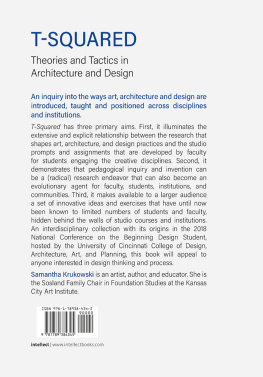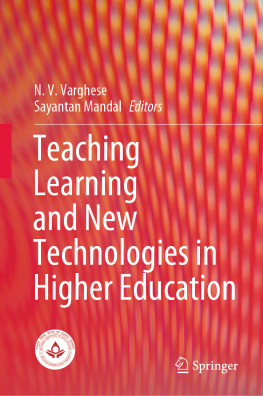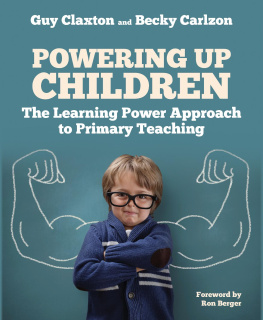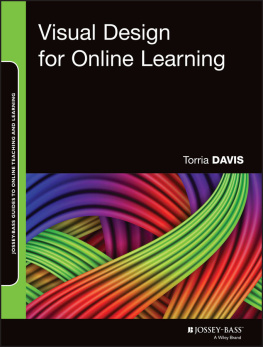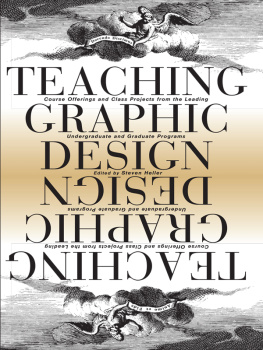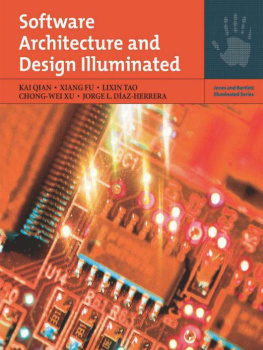On behalf of the chapter authors and myself, I would like to offer deepest thanks to Grace Harrison and Julia Pollacco at Routledge/Taylor and Francis and to Graham Cairns at Architecture, Media, Politics, Society (AMPS) for their support and guidance during the development of this book. I would also like to thank the external reviewers of the proposal for their insightful feedback and suggestions. Kindest thanks are also offered to the Art Gallery of South Australia for permission to reproduce the image in from their collection and to the students whose work and commentary is reproduced throughout this book.
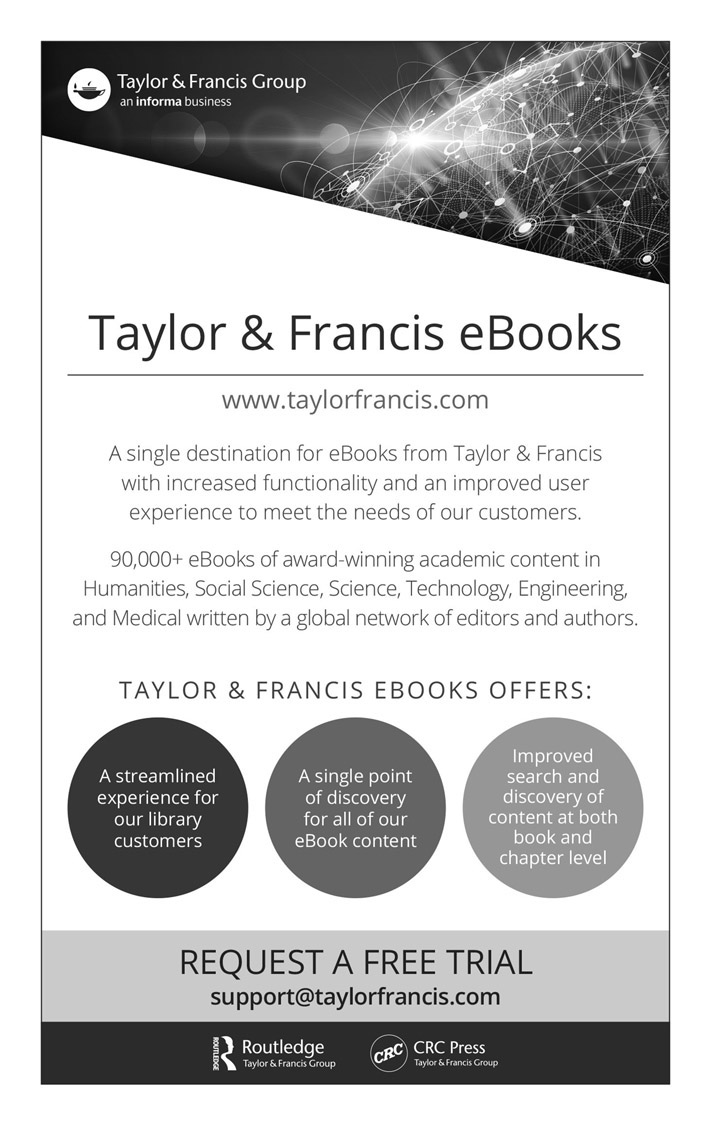
1
A framework for enhancing the design skill sets of landscape architecture students
Gerhard Griesel and Magda Fourie-Malherbe
Introduction
Internationally the imperatives for access and fair chances of success have given rise to criticism of undergraduate design Current design teaching also contributes to this gap, because of the inappropriate assumptions about students prior knowledge that do not take sufficient account of the wide range of educational preparedness of students and what they require to bridge the transitions from school to university and between various phases of undergraduate study.
The primary focus of landscape architecture design programmes is on developing skill sets through disciplinary content. Skill sets is an umbrella term that includes various commonly used terms such as ability (skill to do something), aptitude (natural ability), competency (the ability to do something well), intelligence (ability to learn and understand) and creativity (the ability to make new things). argue that design skills are not inherent and can be developed. Subscribing to the view that creative potential is a combination of various skills that can be learned and taught, this chapter introduces a framework to enhance the design skill sets of landscape architecture students.
Design as a set of skills
Cross posits that design knowledge is a designerly way of knowing.
Dsouza and Chandrasekhara further argue that identifying the composite of skill sets for designers could firstly contribute to making design learning more inclusive, as differences in skills levels, weaknesses and strengths of students could be clearly identified, and secondly, such an approach could support the recognition and appreciation of individual differences and approaches in design. The themes include:
Emotional design skill set:
How a student feels can profoundly shape how they think. For example, emotions can promote learning by capturing and holding attention. Skills that involve emotions are intrapersonal intelligence (personal emotions) and interpersonal intelligence (anothers emotions).
Sensory design skill set:
Designers interact constantly with the environment surrounding them.
Logical design skill set:
These skills refer to how designers understand and apply abstract symbols/formulae, formal logical thinking, deciphering codes, numerical calculations and problem solving. Skills that involve logic are logical-mathematical intelligence (working with numbers and geometry as well as solving problems) and spatial intelligence (understanding symbols and identifying and designing formal strategies).
Ideational design skill set:
Ideational/depictive skills allow for the visualisation and representation of concepts, ideas and spaces. This skill set has the strongest connections to design, because these skills involve both the medium and product of designing. Spatial intelligence includes the ability to perceive the visual world accurately and to transform and modify initial perceptions via mental imagery.
This appreciation of a composite of skill sets for designers reduces the overt emphasis on graphical skills and form making by recognising the importance of skills such as problem-solving, spatial sensitivity, interpersonal and linguistic skills that are critical in dealing with real-world design situations.
The challenge
The peculiar character of the landscape architectural profession requires landscape architects to be familiar with a wide range of knowledge fields, extending from the field of natural sciences to that of artistic creativity.
The complexity of design tasks requires individuals to have a wide array of skills, including spatial visualisation, problem-solving, verbal, communication, and interpersonal skills. Yet design education today seems to be limiting skills to form manipulation and graphical skills. These latter skills, although essential to design, predict only a part of a designers application in real-world contexts.
The transition process into higher education, referred to by, amongst others, Botes and Khan,
Students of diverse and poor socioeconomic backgrounds are even more vulnerable in the higher education context. The design skill set framework explicated here is an attempt to assist design students, particularly those from disadvantaged backgrounds, to cope more effectively with the transition from school to higher education by enhancing their design skill sets in innovative ways.
Design skill set enhancement framework
The design skill set enhancement framework was developed through the exploration of existing principles of teaching and learning in design education as well as the creation of the design skill set modal agencies and the design knowledge semiotic process, as illustrated in . The three components of the framework are explicated here.

Design skill set enhancement framework
Existing design education principles
Design education should encourage individuality of
The following principles highlight some of the influences that may affect a student-centred, realistic and effective learning environment in design education: self-efficacy and environmental influences, authentic contextualenvironments, collaborative learning environments, analogical reasoning and process of interpretation.
Self-efficacy and environmental influences
Looking beyond the basic definitions of creativity, some creativity theorists have recently highlighted the importance of individuals perceptions of their own creative competency. Diliello, Houghton and Dawley posit that an individual will experience creative expression when that person perceives that their work environment supports creativity. Thus, establishing an emotionally supportive and caring environment could provide the psychological safety net necessary for students to take the risks required for creative learning and expression.
By enhancing the individuals self-efficacy, Developing creative self-efficacy hence becomes an important principle in design education.
Authentic contextual environments
Reeve et al. theorise that to establish a contextual and complex learning environment that is purposeful and motivational, the context must be all-embracing.
Puckett and Reese observe that many courses miss this opportunity by removing ordinary, real-life experiences from course materials. incorporating the notion of acquiring knowledge and skills in contexts that reflect the way knowledge will be applied in real-life situations. Authentic contextual teaching and learning environments facilitate the process of knowledge development by bridging the gap between theoretical knowledge concepts and the understanding and real-life application of that theoretical knowledge.


